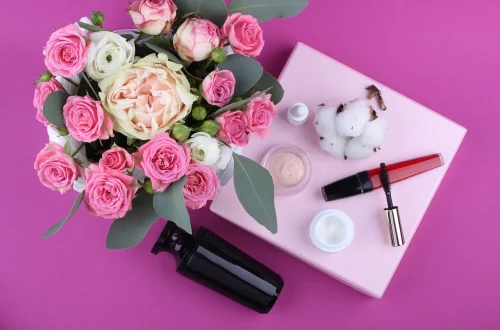
Essential Guide to Choosing a Water Chiller for Cold Plunge Therapy
Cold plunge therapy has gained significant popularity among wellness enthusiasts looking to harness the benefits of cold exposure. This practice involves immersing oneself in cold water, which is believed to improve circulation, boost immune function, and reduce inflammation. However, the effectiveness of cold plunge therapy largely hinges on the water temperature, making the choice of an appropriate water chiller a critical aspect of setting up a cold plunge system.
Selecting the right water chiller requires careful consideration of various factors, including the size of your plunge pool, the desired water temperature, and the overall efficiency of the unit. With so many options available on the market, it can be overwhelming to make an informed decision. Understanding how water chillers operate, the technologies involved, and the specifications that matter most can significantly enhance your cold plunge experience.
This guide aims to equip you with essential knowledge, enabling you to choose a water chiller that not only meets your needs but also optimizes the benefits of your cold plunge therapy. Whether you’re a professional athlete, a wellness coach, or simply someone looking to explore the advantages of cold exposure, having the right equipment is paramount for achieving your health and wellness goals.
Understanding Water Chiller Technology
Water chillers are essential for maintaining the optimal temperature in your cold plunge setup. These devices utilize various technologies to efficiently cool water, ensuring that users can experience the full benefits of cold exposure therapy. There are two main types of chillers: air-cooled and water-cooled.
Air-cooled chillers use ambient air to cool the refrigerant inside the unit. This type of chiller is generally easier to install and maintain, making it a popular choice for residential settings. They work by drawing in warm air, cooling the refrigerant, and then passing the cooled refrigerant back into the water. While air-cooled chillers are effective, their performance can be influenced by the surrounding temperature. In hotter climates, they may struggle to maintain lower water temperatures, which could affect your cold plunge experience.
On the other hand, water-cooled chillers use a separate water source to cool the refrigerant. This type is often more efficient and can maintain a more consistent temperature, but it requires a more complex installation. Water-cooled systems are typically used in commercial applications or larger setups where performance is critical.
When choosing a water chiller, consider the cooling capacity, often measured in BTUs (British Thermal Units). This rating indicates how much heat the unit can remove from the water in a given time frame. A higher BTU rating means faster cooling, which is particularly important for larger plunge pools or if multiple people will be using the system simultaneously.
In addition to cooling capacity, look for energy efficiency ratings. Many modern chillers come with energy-saving features that can significantly reduce operational costs over time. Investing in a high-efficiency model not only benefits the environment but can also lower your electricity bill.
Factors to Consider When Choosing a Water Chiller
Selecting the right water chiller for your cold plunge therapy involves several critical factors. First and foremost, consider the size of your plunge pool. The volume of water you need to cool directly impacts the size and capacity of the chiller you should choose. A chiller that is too small for your setup will struggle to maintain the desired temperature, while an oversized unit may lead to unnecessary energy consumption.
Next, think about the desired water temperature for your therapy sessions. Cold plunge therapy typically requires water temperatures between 40°F to 60°F (4°C to 15°C). Ensure that the chiller you select is capable of achieving and maintaining these temperatures efficiently. It’s also wise to account for external factors, such as outdoor temperatures and the frequency of use, as these can influence the chiller’s performance.
Another consideration is the location of the chiller. If you’re installing the system indoors, noise levels may be a concern. Some chillers operate quietly, while others can be quite loud. If you plan to place the chiller near living areas, look for models designed with sound-dampening technology.
Maintenance is another crucial aspect. Choose a chiller that is easy to service and has readily available replacement parts. Some units come with advanced self-cleaning features, which can save you time and effort in maintaining optimal performance.
Additionally, consider the brand reputation and customer reviews. Researching user experiences can provide valuable insights into reliability, performance, and customer service. Opt for a manufacturer that offers a good warranty period, as this can be an indicator of the unit’s durability and the company’s confidence in their product.
Installation and Maintenance Tips for Water Chillers
Proper installation and maintenance of your water chiller are essential for ensuring its long-term performance and efficiency. When installing the unit, follow the manufacturer’s guidelines closely. Ensure that the chiller is placed in a well-ventilated area to prevent overheating, and maintain adequate space around the unit for airflow.
If you’re opting for a water-cooled chiller, ensure that the water supply is consistent and clean. Regularly check for any leaks in the plumbing, as even small leaks can lead to significant performance issues over time. Using a water filter can also help keep the system clean and prevent mineral buildup, which can affect the chiller’s efficiency.
Routine maintenance should include checking the refrigerant levels, cleaning the condenser coils, and inspecting the pump for any signs of wear or damage. It’s advisable to schedule professional maintenance at least once a year to ensure everything is functioning optimally.
In addition to routine checks, monitor the chiller’s performance regularly. If you notice fluctuations in water temperature or unusual noises, it may indicate a problem that needs immediate attention. Addressing issues early can prevent costly repairs down the line and extend the lifespan of your equipment.
Finally, keep an eye on the energy consumption of your chiller. If you notice a sudden increase in your energy bills, it might be time to investigate further. Efficient equipment not only saves you money but also reduces your environmental impact.
In conclusion, investing in the right water chiller is a crucial step in optimizing your cold plunge therapy experience. By understanding the technology, considering essential factors, and following proper installation and maintenance guidelines, you can enhance the benefits of cold exposure therapy and enjoy a more effective wellness routine.
**Disclaimer:** This article is for informational purposes only and does not constitute medical advice. Always consult with a healthcare professional before starting any new therapy or treatment, especially if you have underlying health conditions.




